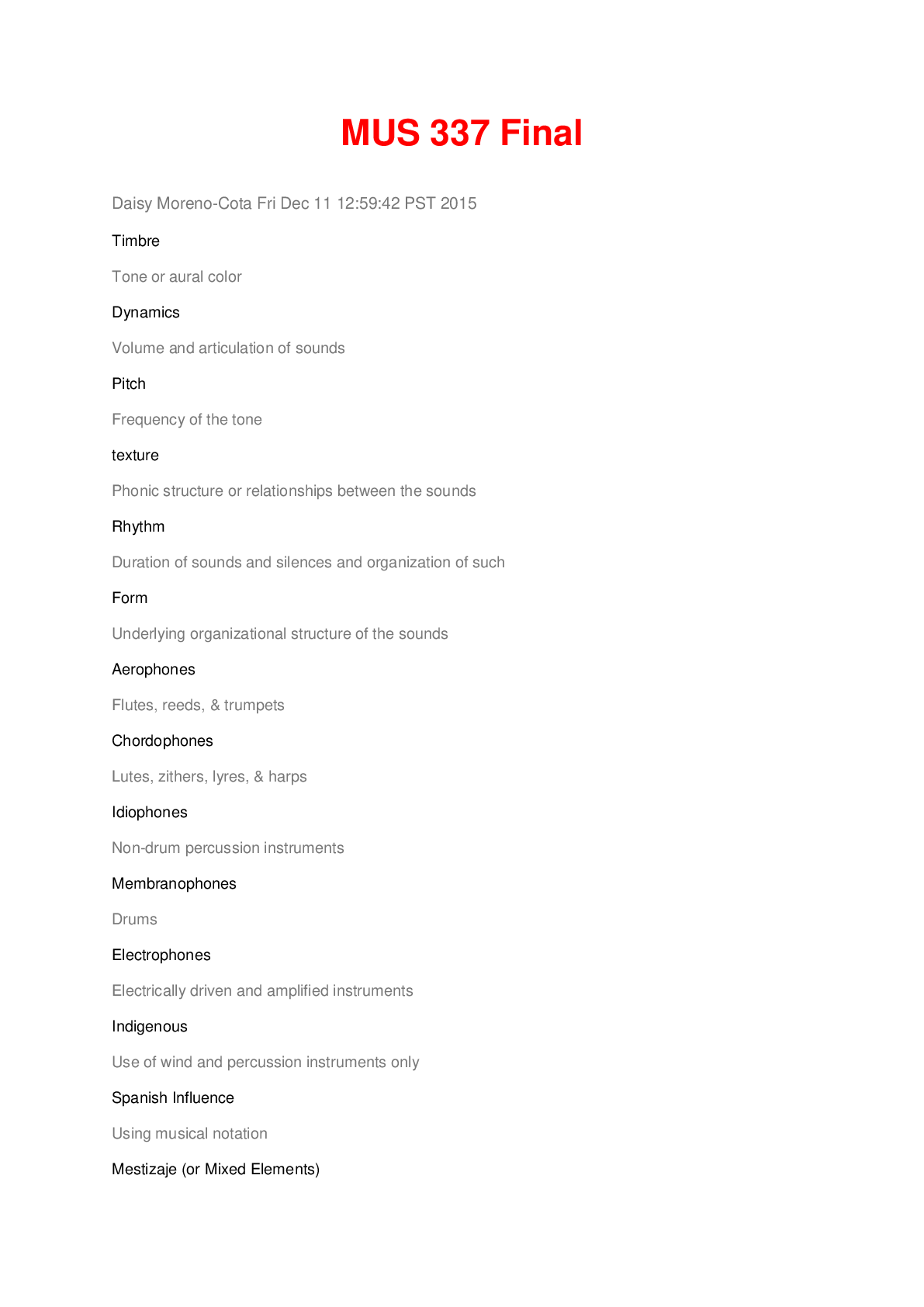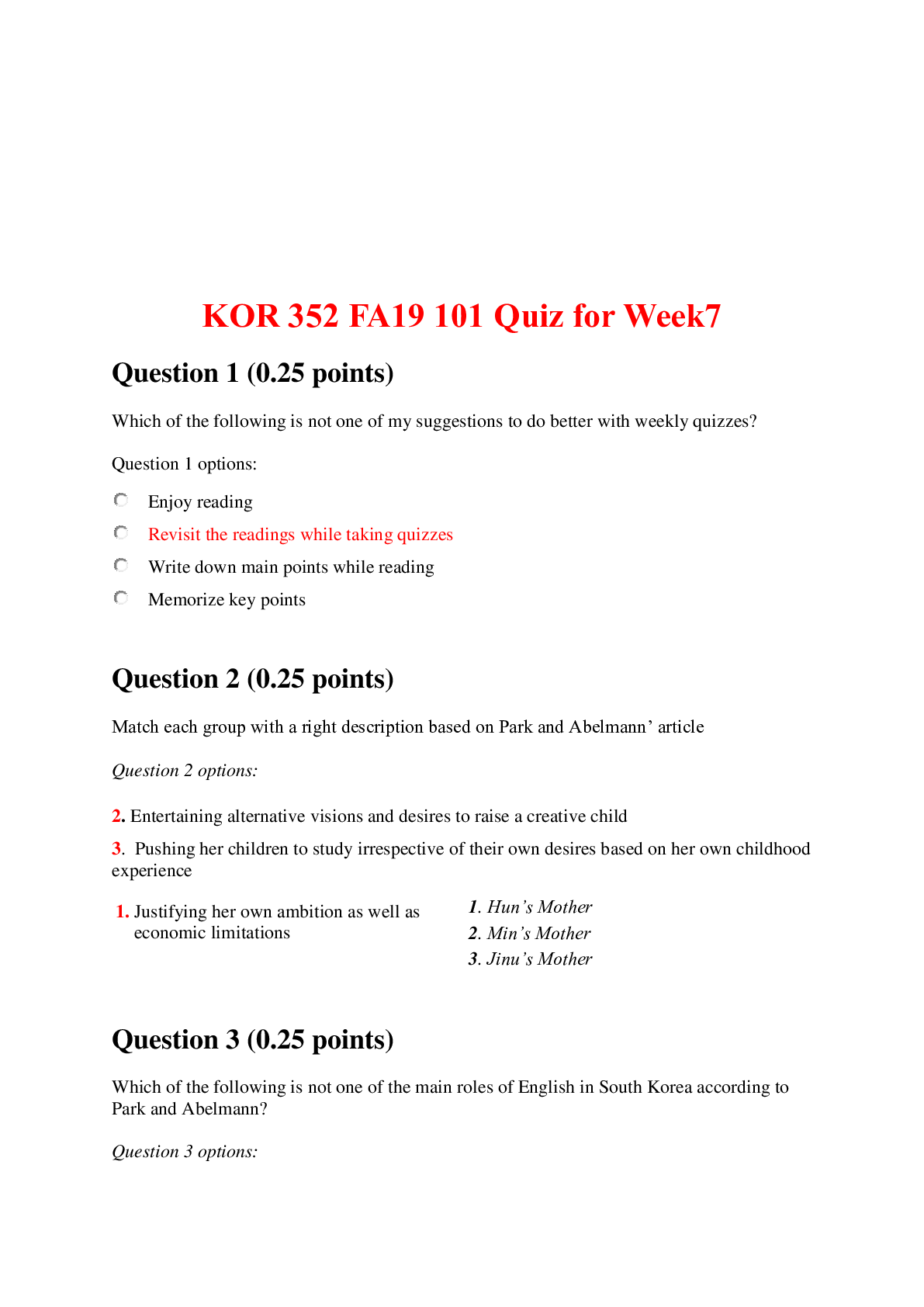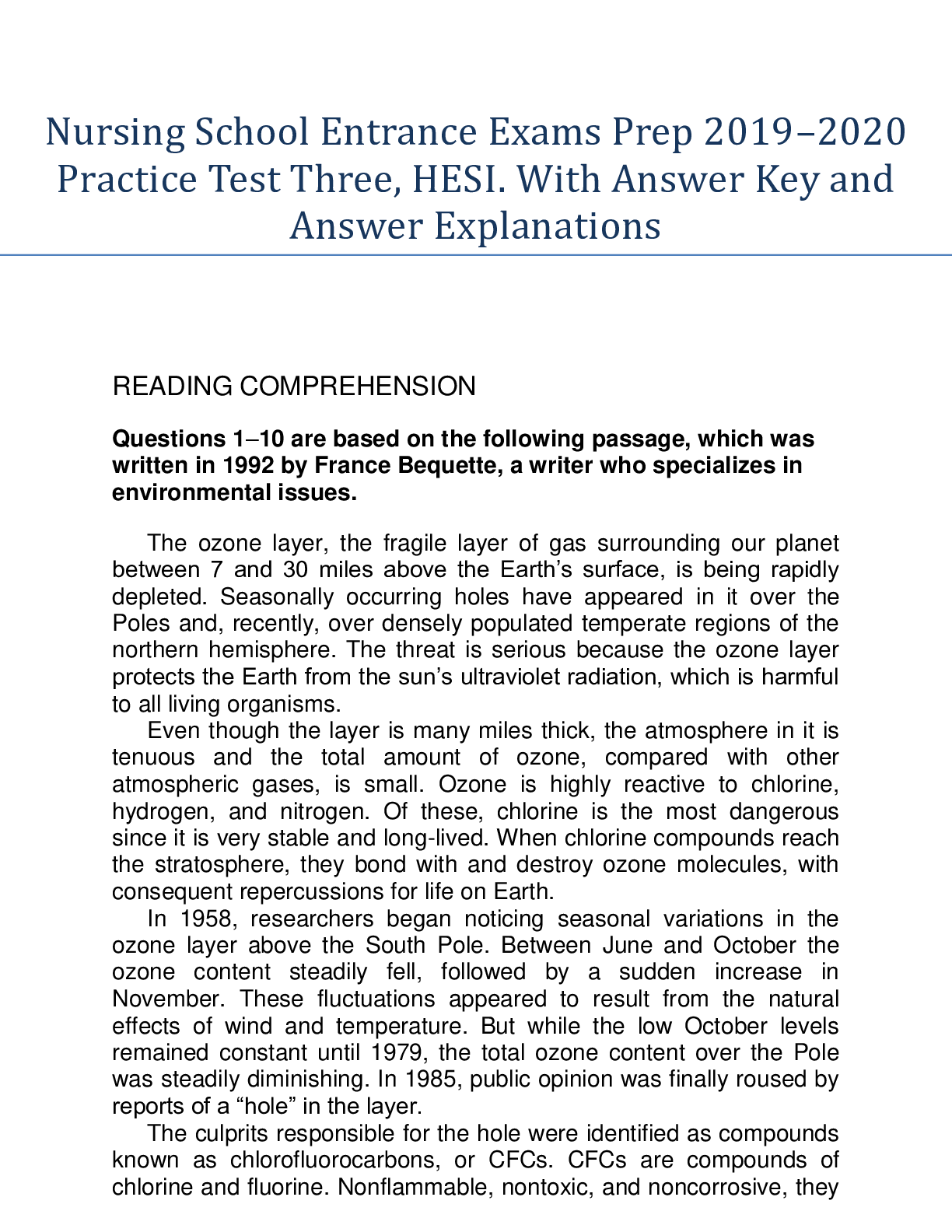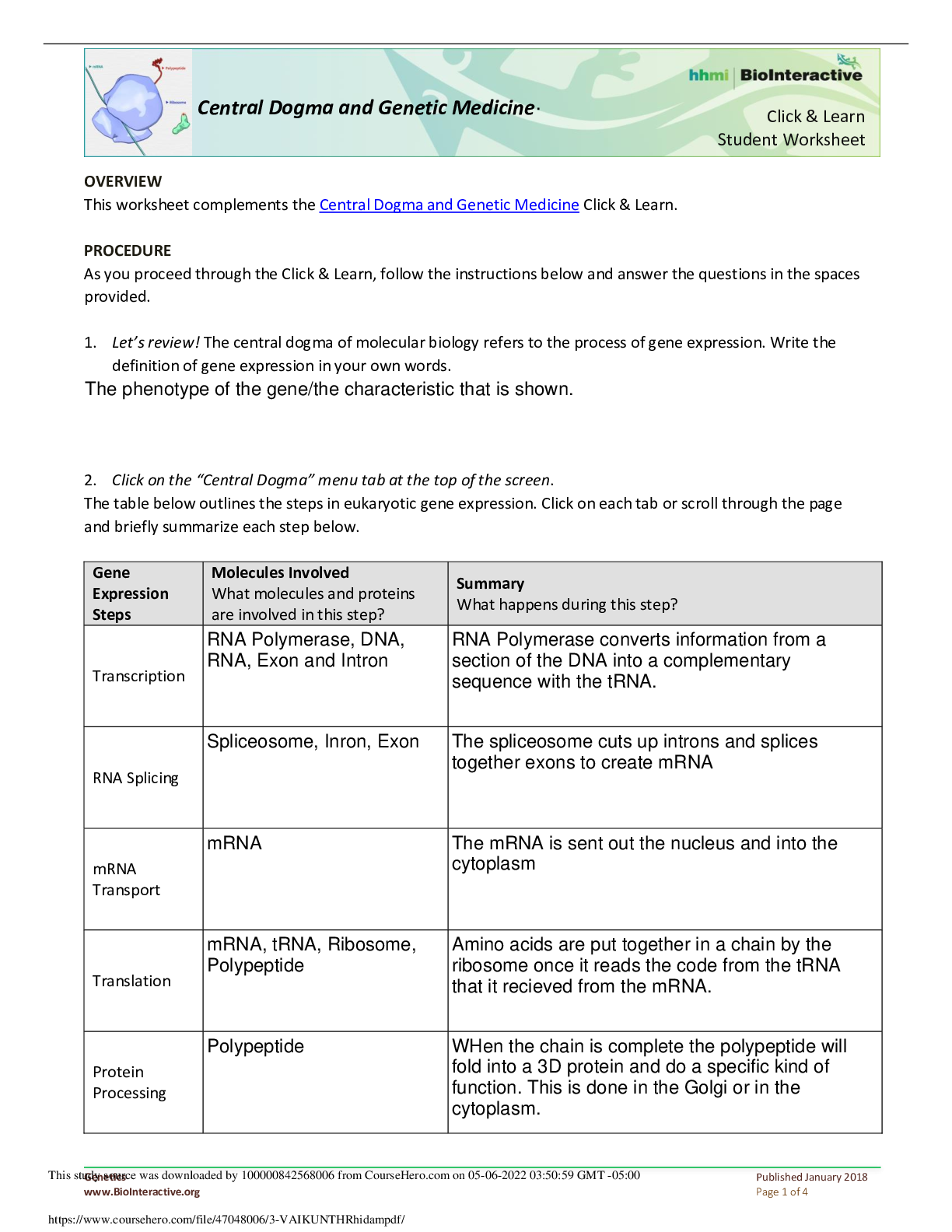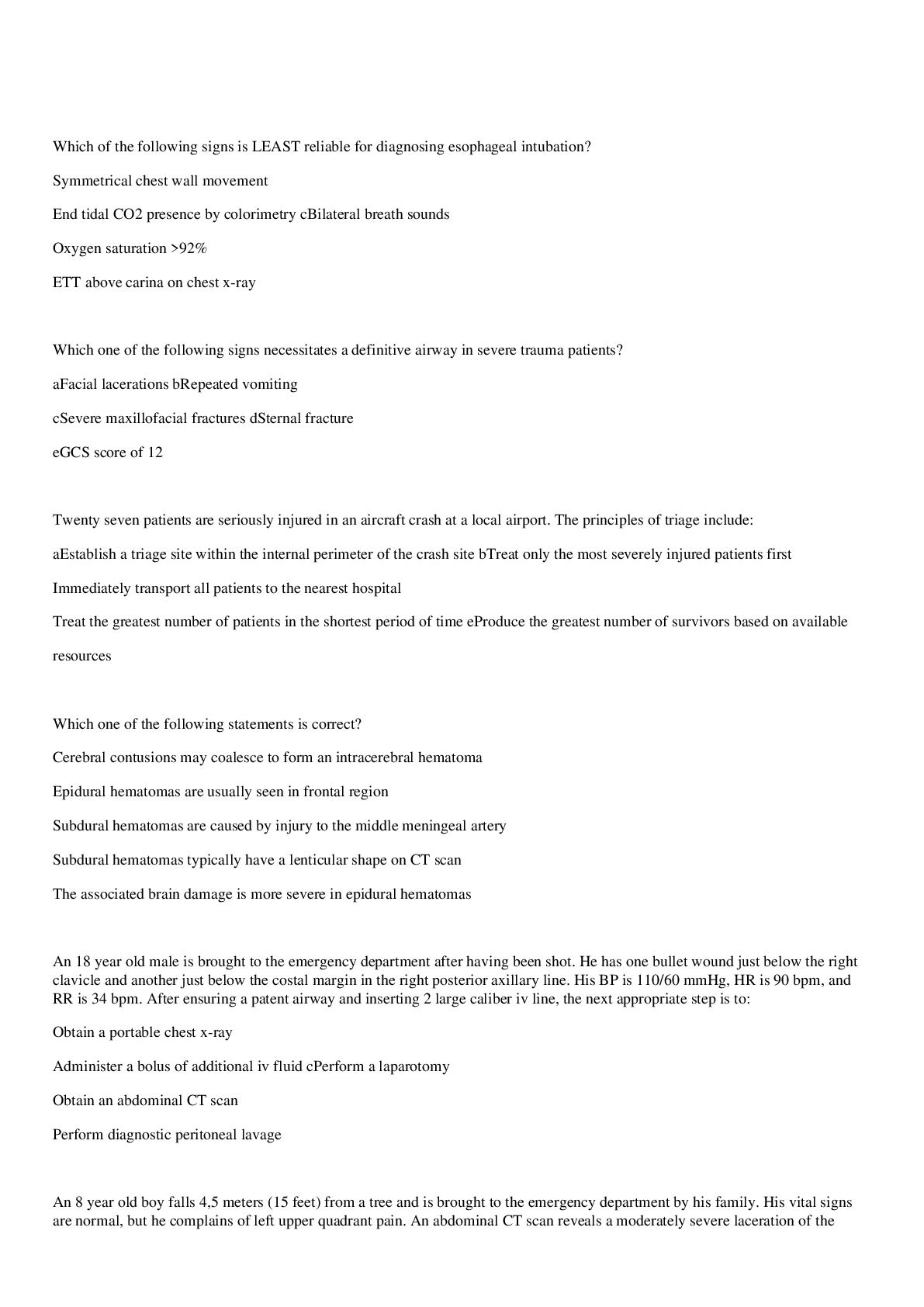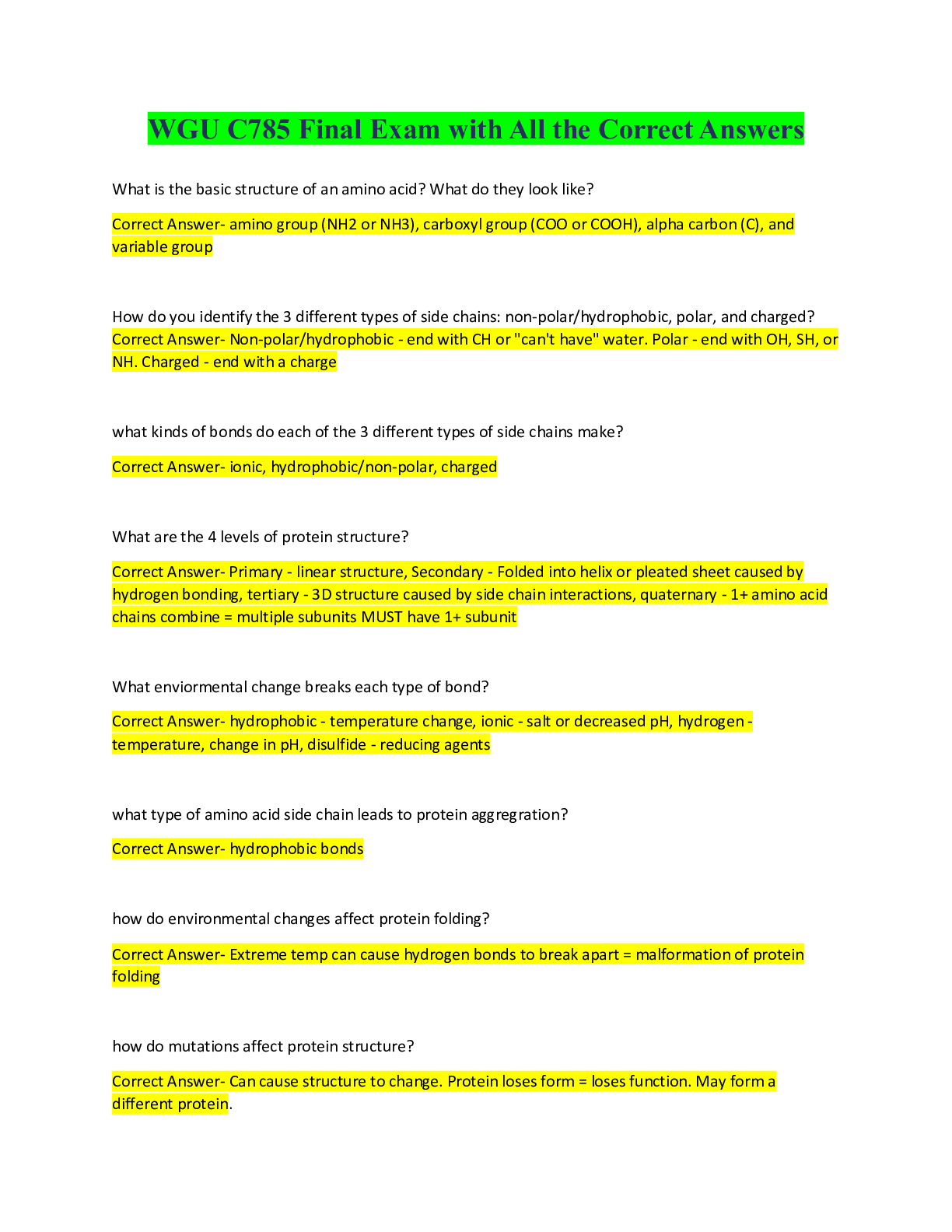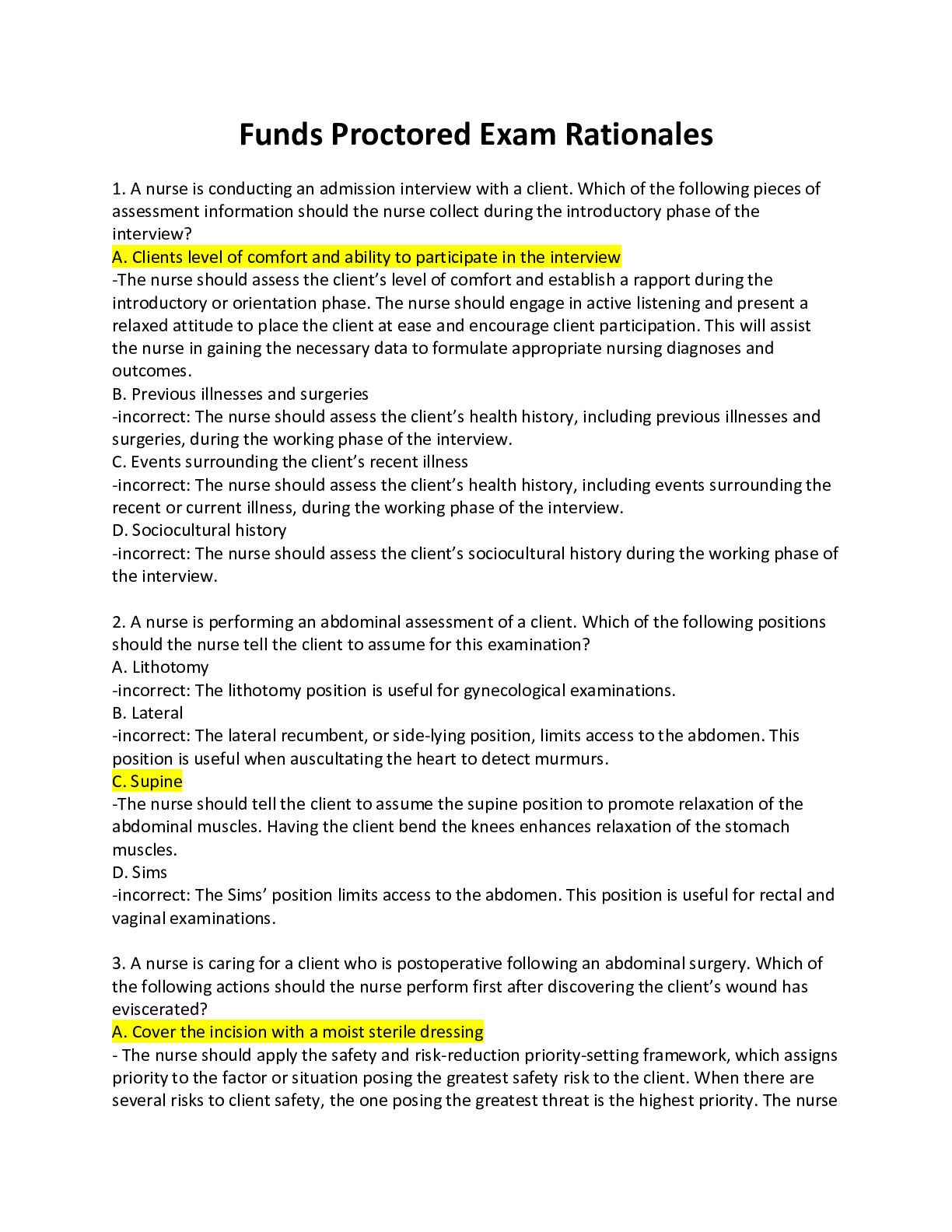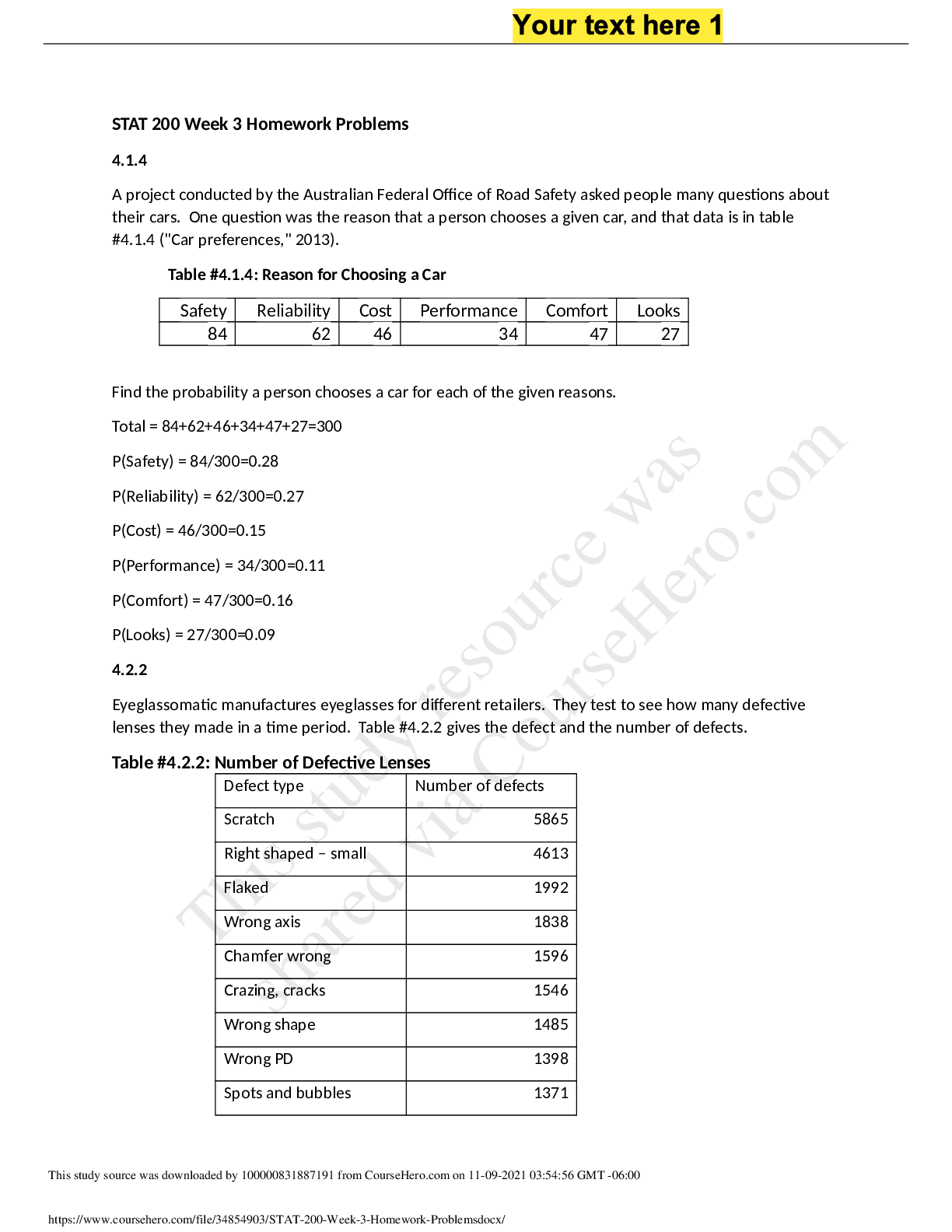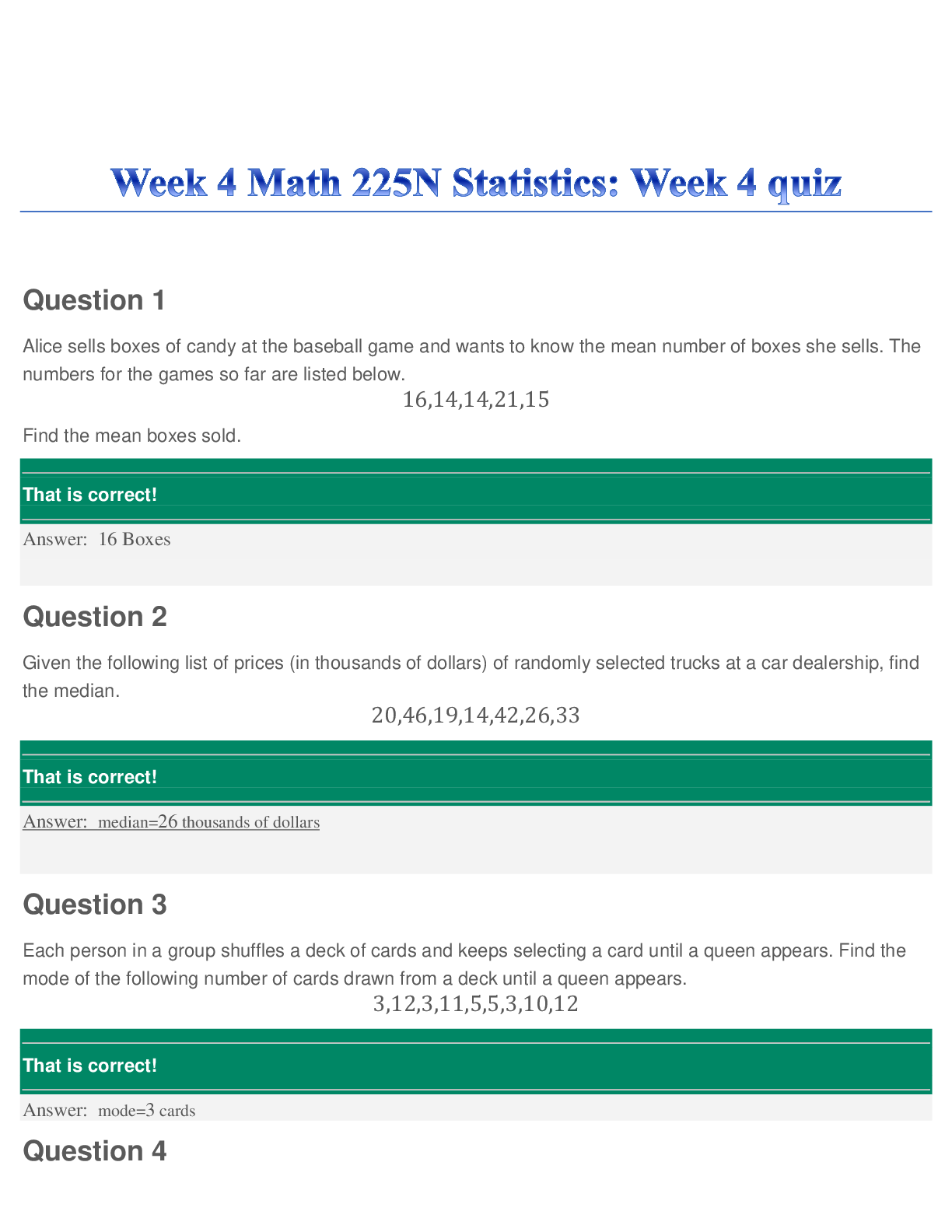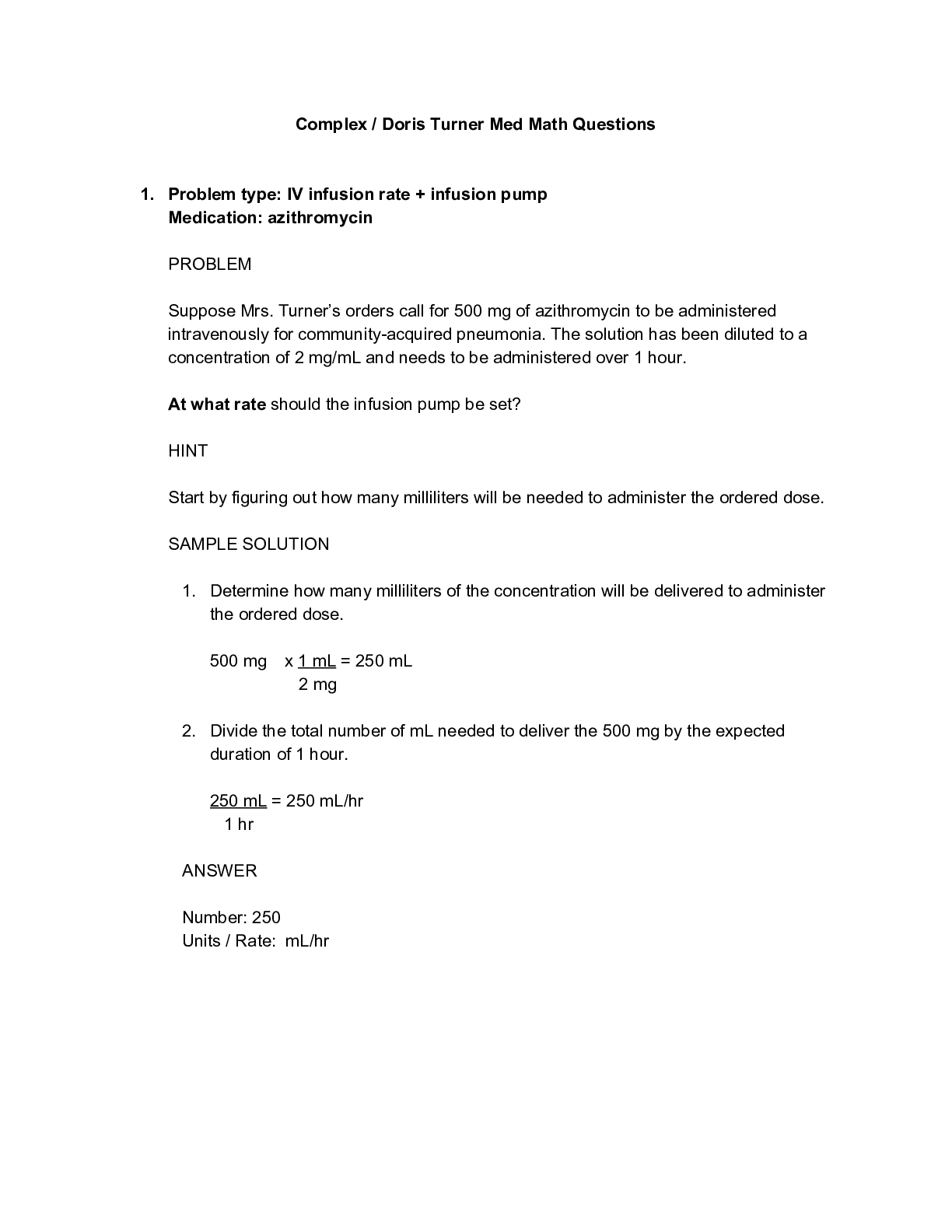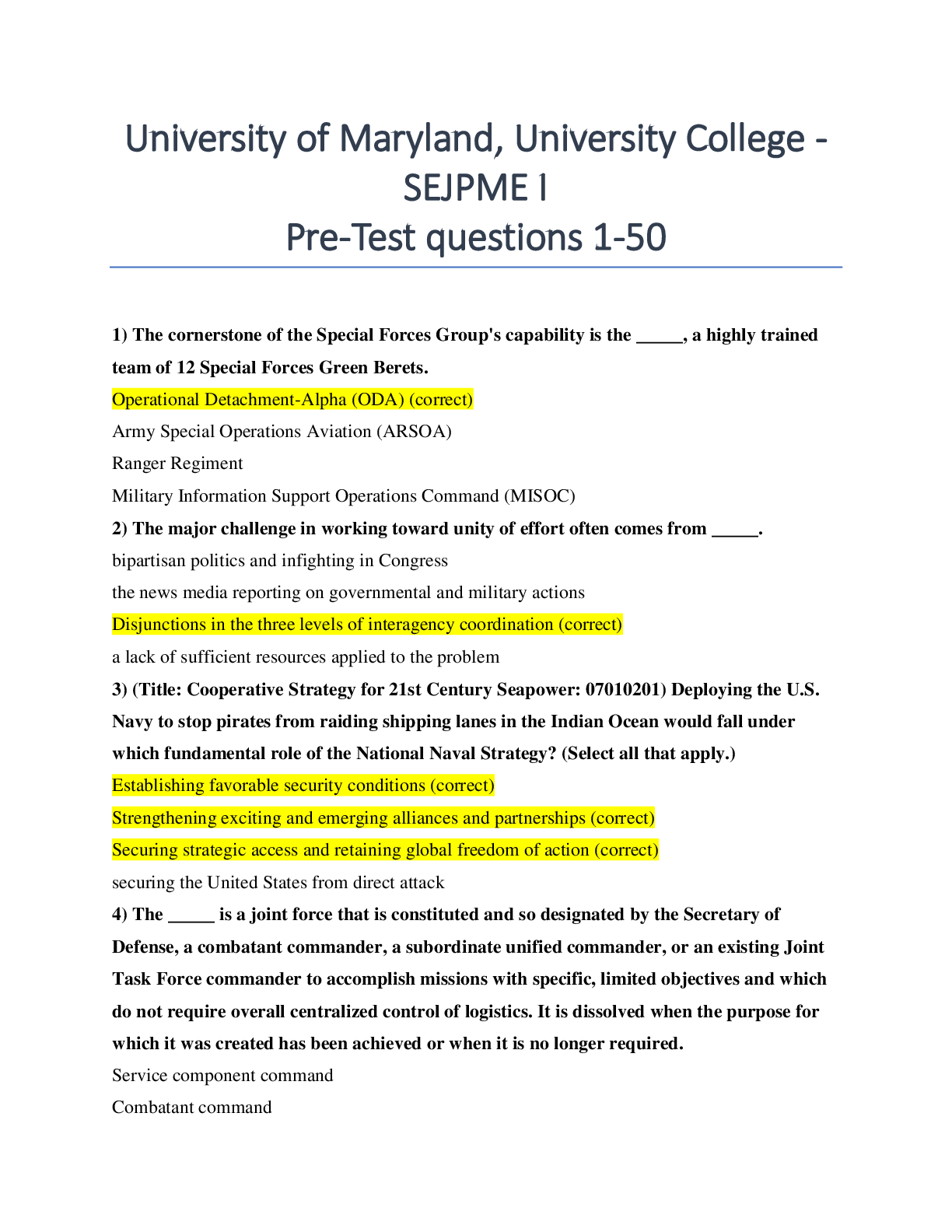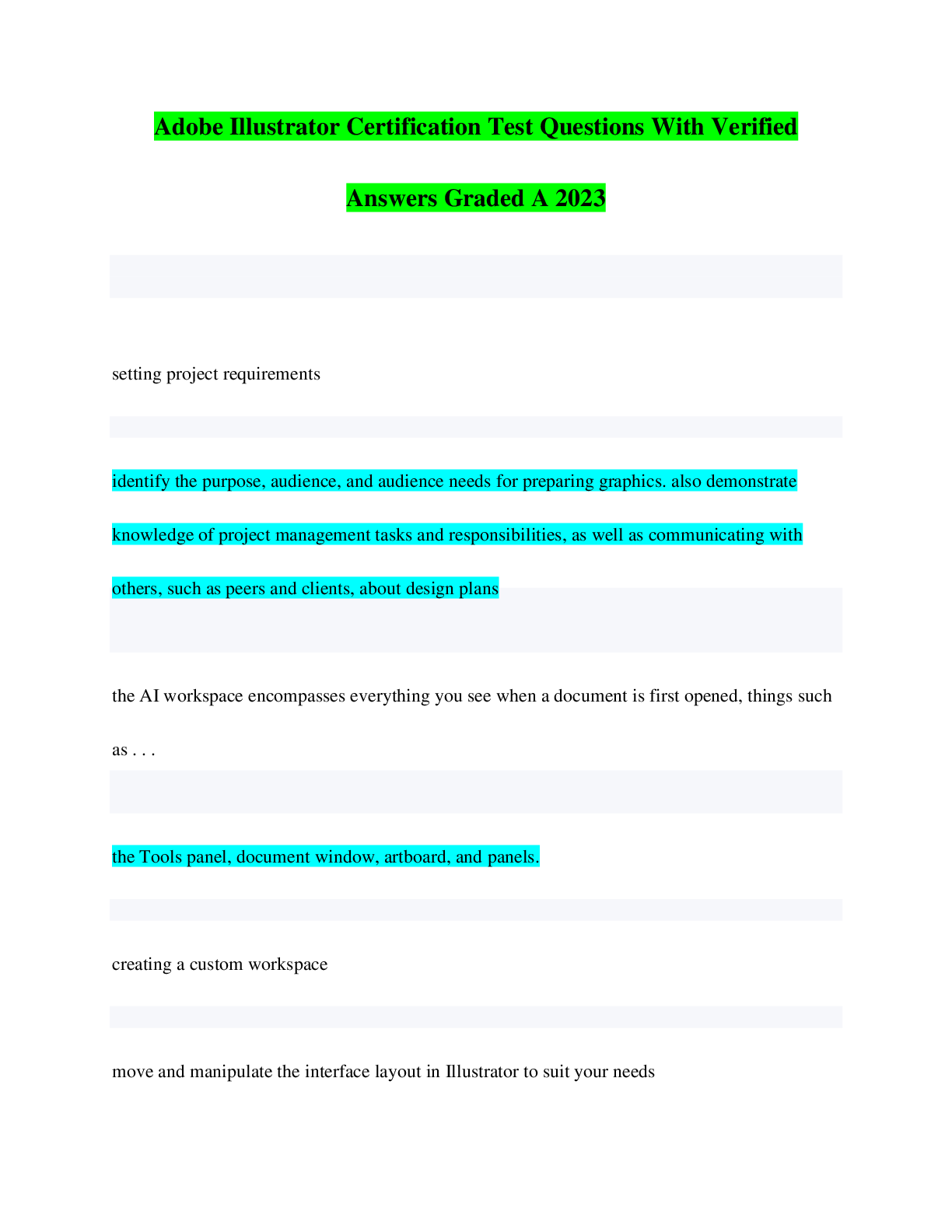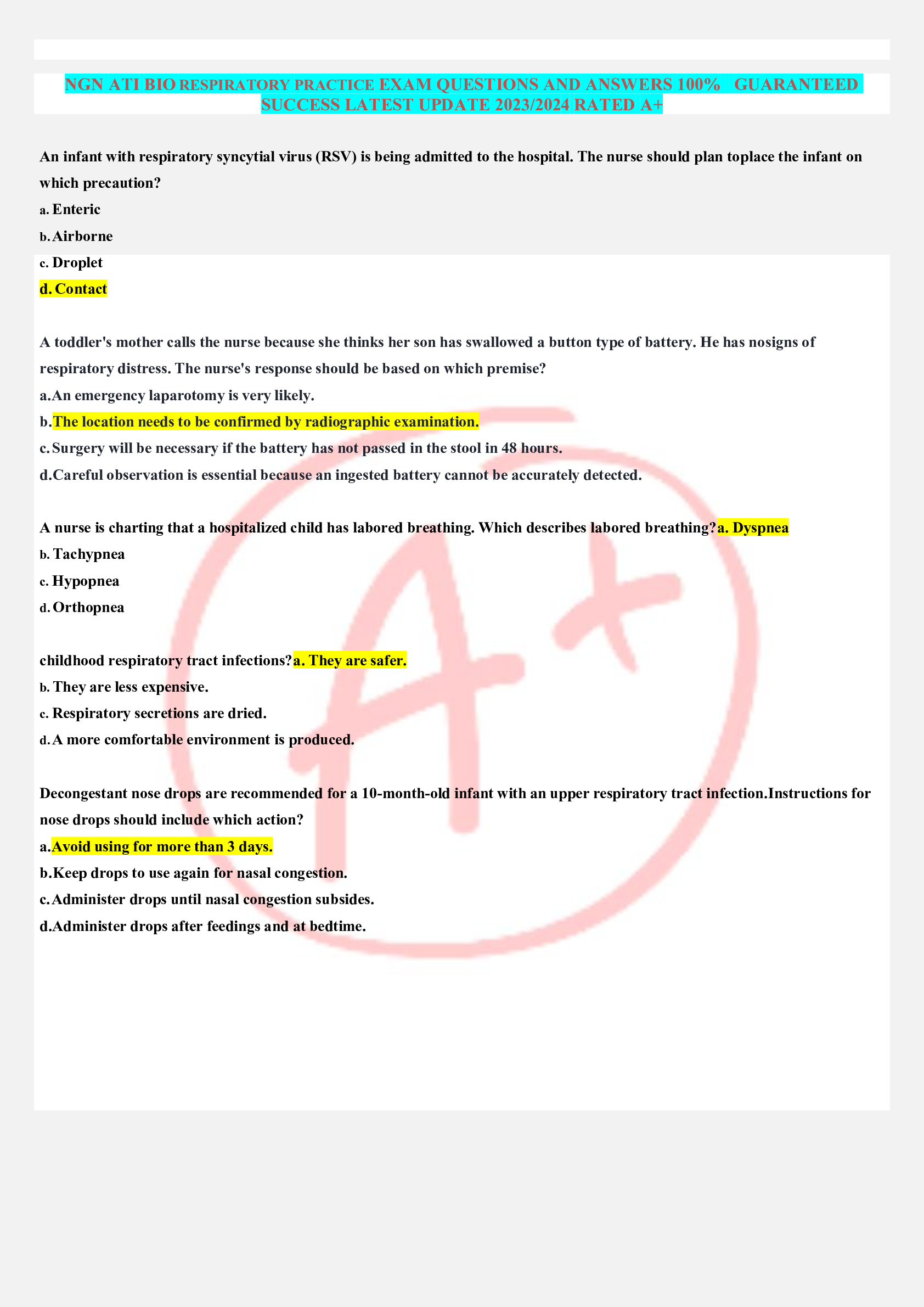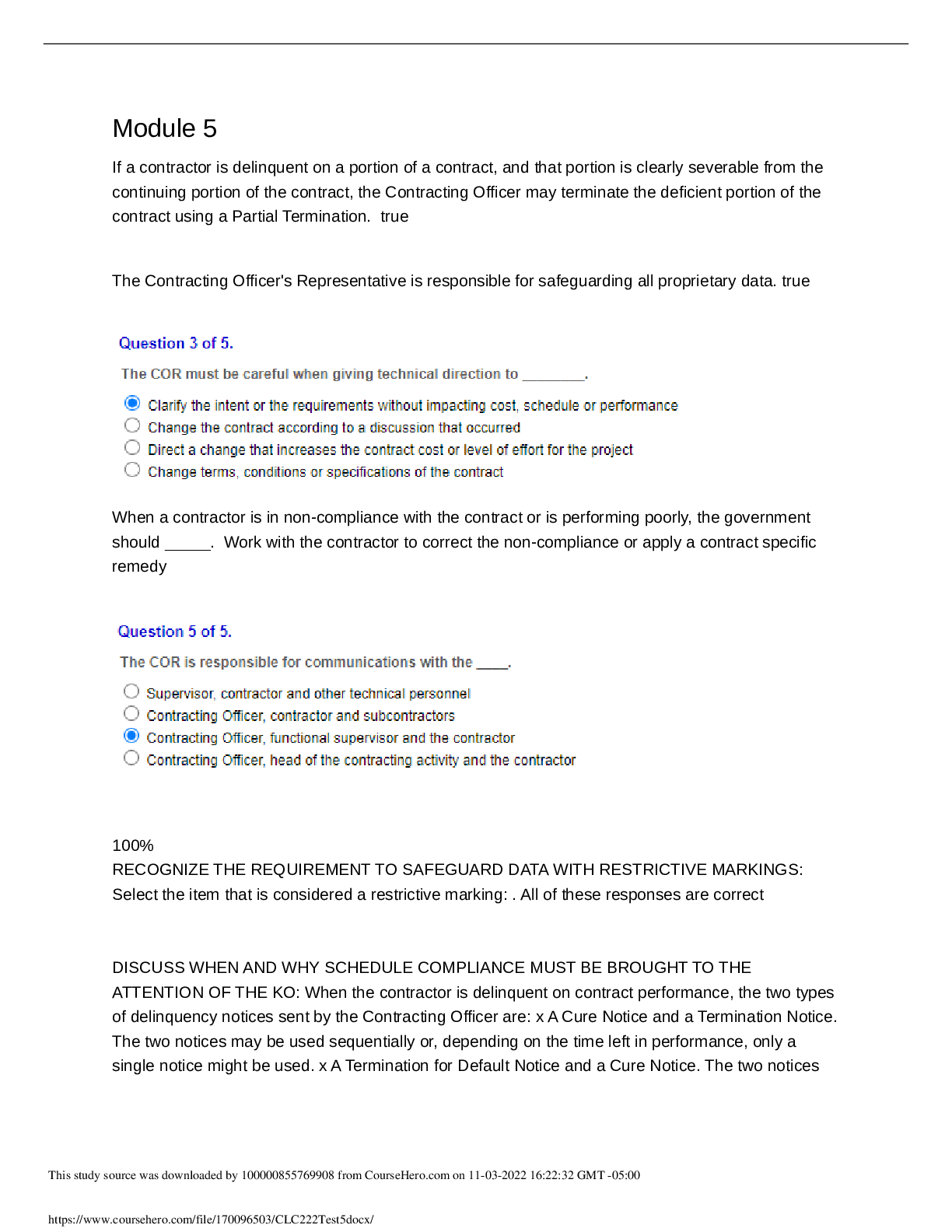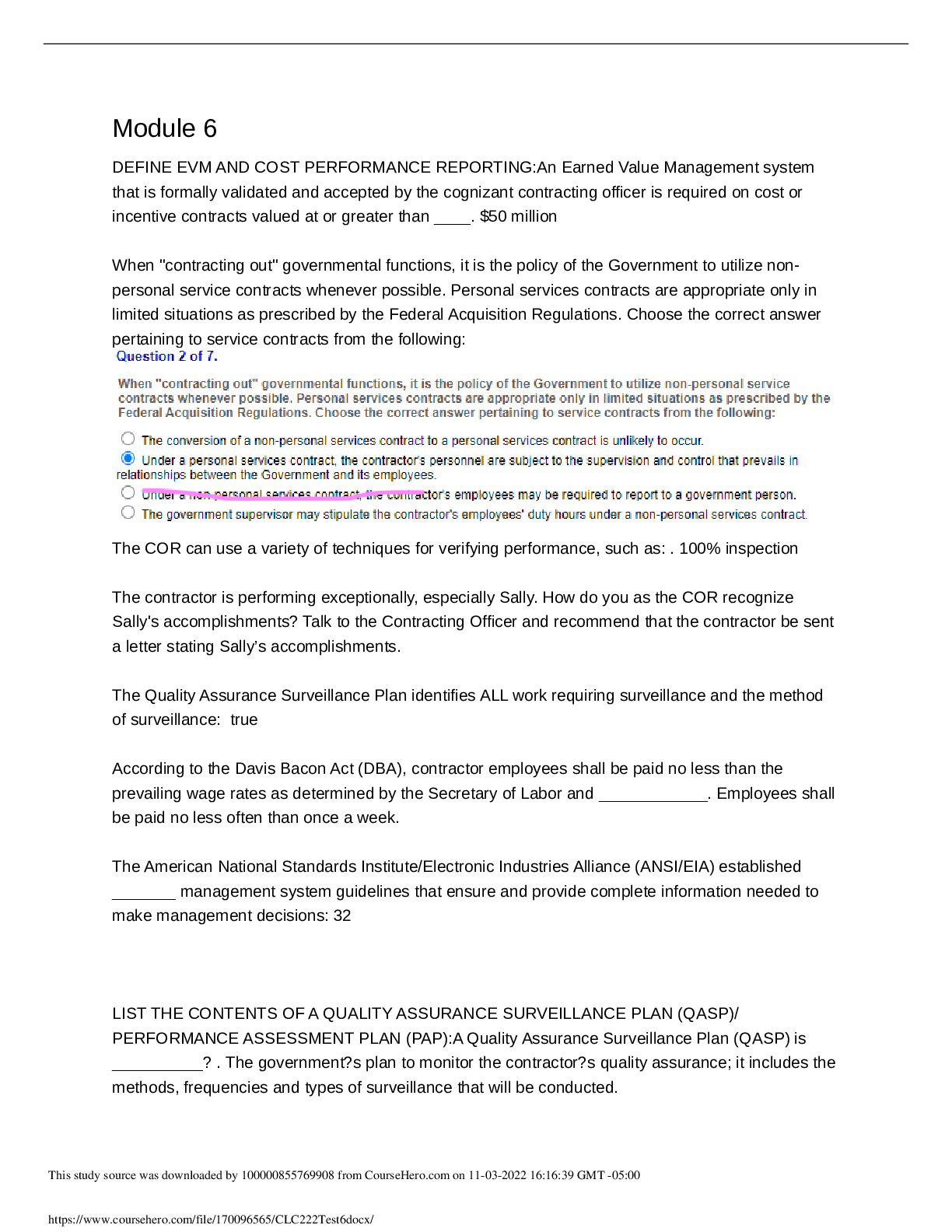Chemistry > QUESTIONS & ANSWERS > Boston College CHEM CH111 Experiment 9 post Lab (All)
Boston College CHEM CH111 Experiment 9 post Lab
Document Content and Description Below
Boston College CHEM CH111 Experiment 9 post Lab 1. Determine the Tf (+ 0.1 ºC) from your plot for Measuring (Cp, cal) by the extrapolation method shown in Figure 1 of the Pre-Lab. Calcu... late the heat capacity (Cp, cal) of the calorimeter using Eq. 9. This value is usually small (less than 20 J/Kelvin or 0.020 kJ/Kelvin). It is such a small value that it is of the same order of magnitude as the experimental error; consequently, the calculation could yield a small negative number. Should this be the case, simply assign (Cp, cal) the value of 0.0 kJ/Kelvin. 2. Using the plot from Measuring ΔH°rxn(2), determine Tf, and calculate ΔH°rxn(2) using Eq. 10. Mg was the limiting reactant because it completely dissolved in the HCl solution Tf= 25.5ºC Enthalpy of Reaction 2= (Cp, aq) (Va)(Tf-Ta) + (Cp, cal)(Tf-Ta) / (number of moles of limiting reagent ) 3. Treat the data obtained for ΔH° rxn(3) in a similar manner by determining Tf and calculating ΔH° rxn(3) using Eq. 10. Tf = 23.3ºC Enthalpy of Reaction 3= (Cp, aq) (Va)(Tf-Ta) + (Cp, cal)(Tf-Ta) / (number of moles of limiting reagent ) 4. Substitute the values you obtained for ΔH°rxn(2) and ΔH°rxn(3), along with the given value for ΔH°rxn(4), into Eq. 4 to calculate the heat of formation of magnesium oxide, ΔH°rxn(1) = ΔH°f(MgO). Questions 1. The concentrations of HCl an NaOH solutions used in the neutralization reaction are approximately equivalent, yet the volumes of HCl and NaOH solutions used in the reactions are not equal. Explain why. 2. The flashbulb that Mark is attempting to modify contains 0.41 g of magnesium metal. a) Based on the heat of formation of magnesium oxide that you obtained, how many kJ of energy are released by the flashbulb contents? b) Assume the energy released by the reaction is completely absorbed by the plastic. If 9.8 g of plastic material having a specific heat of 8.2 J/g°C has been used to manufacture the bulb, what will be the temperature of the plastic after the flashbulb goes off? Assume the bulb is at room temperature, 20°C, before ignition. 3. Explain why the final temperature, Tf, must be extrapolated from the plot (see Figure 1). Why can you not simply use the maximum temperature recorded? [Show More]
Last updated: 1 year ago
Preview 1 out of 4 pages

Reviews( 0 )
Document information
Connected school, study & course
About the document
Uploaded On
Nov 08, 2022
Number of pages
4
Written in
Additional information
This document has been written for:
Uploaded
Nov 08, 2022
Downloads
0
Views
47







